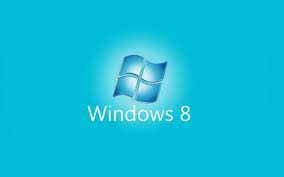Breadcrumbs
Home / Windows 8 Consumer Preview – Installation GuideWindows 8 Consumer Preview – Installation Guide
Last Updated on Tuesday, 13 March 2012 07:41 Written by DarkKnightH20 Tuesday, 13 March 2012 07:22
Windows 8 Consumer Preview is now available for public beta testing. This includes the 64-bit and 32-bit versions. Previously, only the developer version was available, but now that the consumer version is out to try for free, many will be interested in installing it. But HOW do you install it? Follow our installation guide to make your installation run as smoothly as possible!
So whether you’re interested in the Windows 8 64-bit Consumer Preview, or just the 32-bit version, we will help you with the install. There are two ways you can go about getting and installing Windows 8:
1) You can use their installation tool, which is found HERE
2) You can bypass using the installation tool and just get the ISO image files HERE
Personally, I was using Windows XP 32-bit and decided to skip Windows Vista and Windows 7, thus going straight to Windows 8 as my upgrade. It IS a beta, so using it as your primary operating system is not necessarily the smartest of ideas as there are compatibility (incompatibility) issues with certain software, drivers, etc.

Windows 8 Consumer Preview Installation Method #1
If you use step 1 to install the operating system, then the file you download from Microsoft’s website is small. It will handle downloading the actual operating system for you and will tell you what software you have installed (if any) will conflict with the new Windows Metro operating system.
You can pick whether or not to keep files as well. The installation is very straight forward.
Windows 8 Consumer Preview Installation Method #2
If you’re like me though and went with step 2 — the ISO disk image, then things are a bit different. It’s not as simple as dragging the ISO file on to a formatted USB drive. Instead try using the Windows 7 USB / DVD download tool, which allows you to easily put an ISO file on to either a USB or DVD. All you do is:
1) Download the ISO for Windows 8 x64 or x32
2) Download / install Windows 7 USB / DVD download tool
3) Using the tool, select the ISO file and whether or not you want to use USB or a DVD (note that you should use at least an 8gb USB thumb drive / flash drive)
4) Restart your computer when done and boot up to the USB drive or DVD drive
This will initialize the Windows 8 setup, which is straight forward to use. You’ll be able to partition / repartition your hard drives during the setup.
For me, I was coming from Windows XP 32 bit Professional / Corporate Edition. Since I was going to Windows 8 64bit, this was a big step and the Windows 7 USB tool did NOT work. An error message is displayed: “Files copied successfully. However, we were unable to run bootsect to make the USB device bootable. If you need assistance with bootsect, please click the “Online Help” link above for more information.”
Though obtainable, Windows XP does not normally come with bootsect.exe.
Instead, I used IMGBURN to put the Windows 8 disc image on to a DVD. This worked well for me and is the easiest, most fast way of bypassing or solving the problem. Hope that helps anyone who is trying to troubleshoot that!
If you’re having issues booting up to the USB or DVD (aka it isn’t automatically booting up), try changing the boot order in your BIOS so that your USB / removable devices or DVD drive boots first. Alternatively, depending on your BIOS, simple keep hitting ESC (escape) until asked what to boot first.
And if you’re wondering what software is compatible or not with Windows 8, check HERE.
If you are worried about drivers — do not be overly worried. Many manufacturers have released special drivers for Windows 8 (such as NVIDIA). For example, I am using drivers for my NVIDIA 8800 GT graphics / video card that are not even publicly on NVIDIA’s website yet. These drivers work great.
P.S: A good alternative to actually installing the operating system over your current one (or dual booting with it) is to install it into a virtual environment (using software such as VMWare, Virtualbox, etc). Consider this route if you wish to keep your current OS in tact.